
Tulum
A town on the Caribbean coastline of Mexico’s Yucatán Peninsula

A town on the Caribbean coastline of Mexico’s Yucatán Peninsula
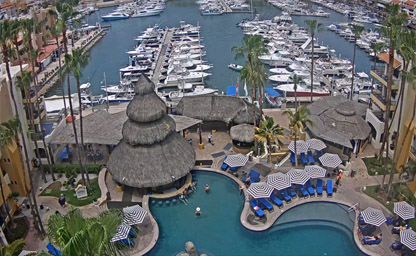
A resort city on the southern tip of Mexico’s Baja California peninsula
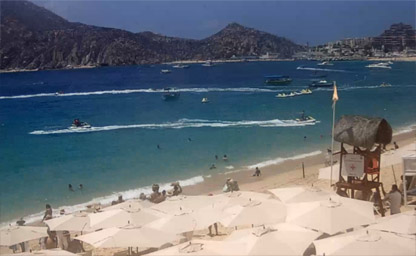
A busy coastal area that draws sunbathers and water sports enthusiasts
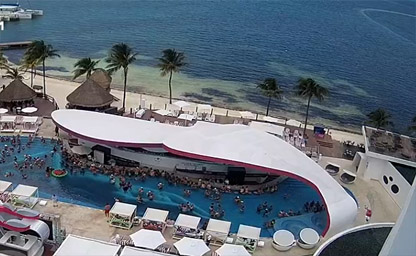
Is for those seeking a level of fun they’ve never experienced before
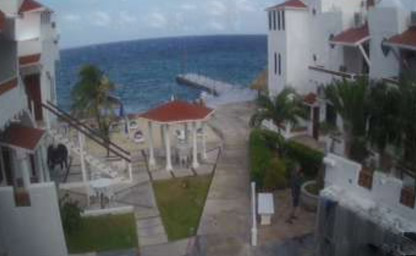
Natural paradise of the islands North East side
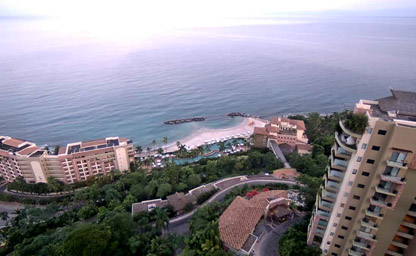
Take a look in real time at what’s waiting for you
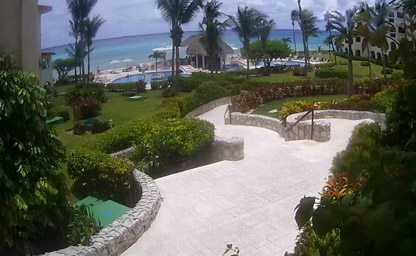
In the heart of the Yucatan Peninsula in the Quintana Roo state
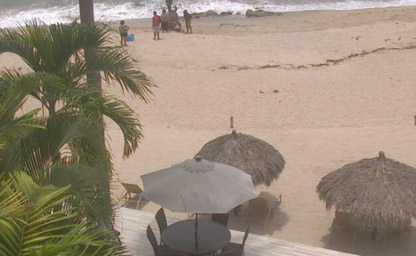
Located on Los Muertos Beach
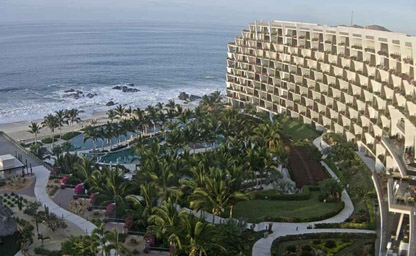
Located on the golden coast of the Mexican Pacific Ocean on the edge of the Banderas Bay
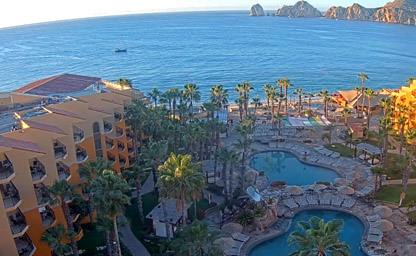
You will find many luxurious private villas in Cabo San Lucas, the Corridor or San Jose del Cabo
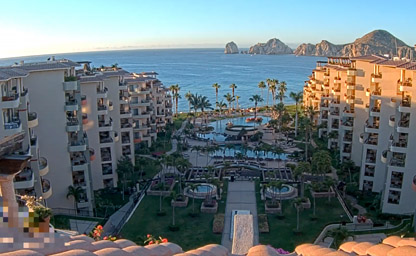
Located in Medano Beach, next to Villa del Palmar at Land's End in Cabo San Lucas
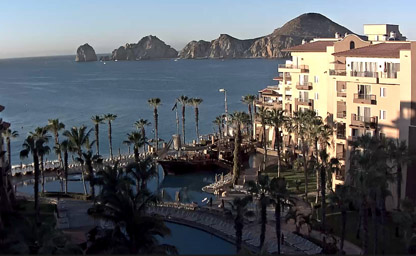
Spectacular landscapes await you where the crystal clear waters of the Sea of Cortez
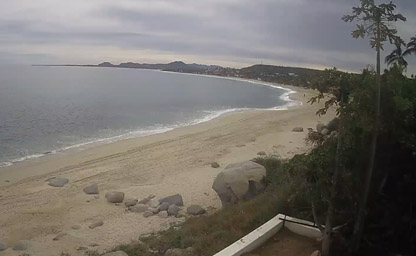
Located at the southern tip of the Baja peninsula (Baja Califorina)
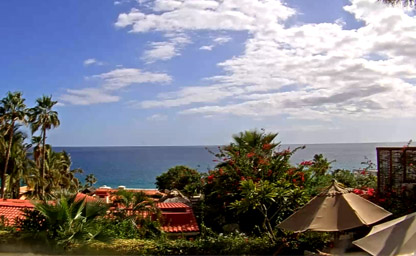
Located halfway between San José del Cabo and Cabo San Lucas
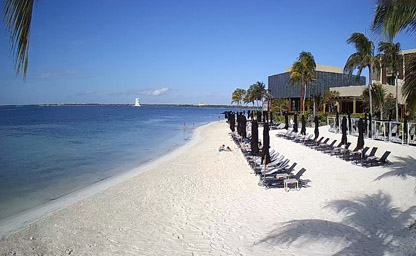
Located in the secluded enclave of Punta NIZUC
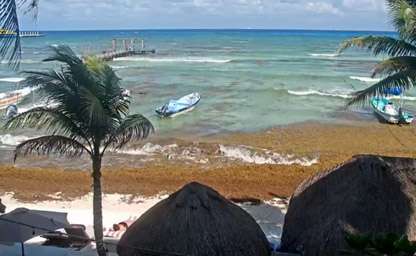
Located in the most exclusive and prestigious part of Playa del Carmen
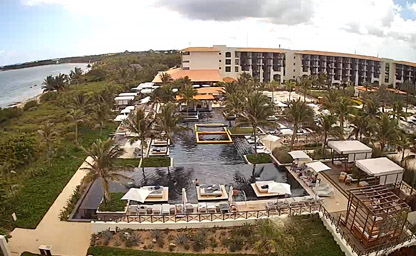
Located at the beach in front of the 20°87° Restaurant
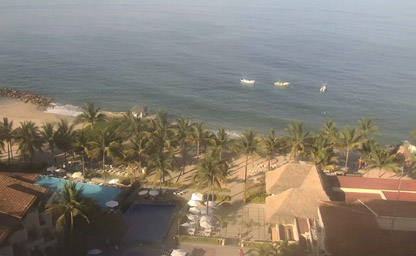
Oceanfront view in Puerto Vallarta, Mexico
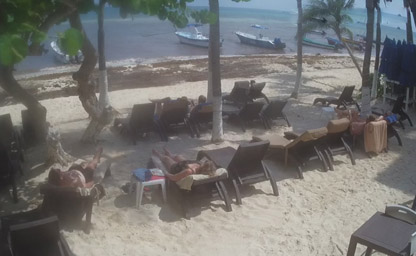
Located on the beach in the heart of Playa del Carmen
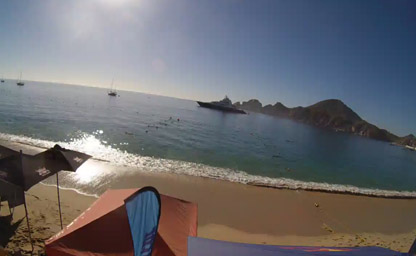
View of Lover's Beach and the famous Arch of Los Cabos
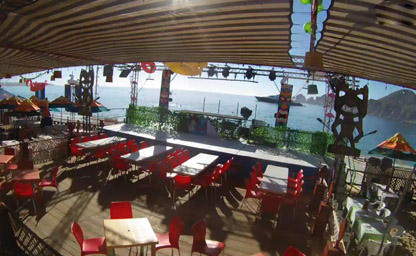
The best restaurant in Cabo San Lucas is Mango Deck
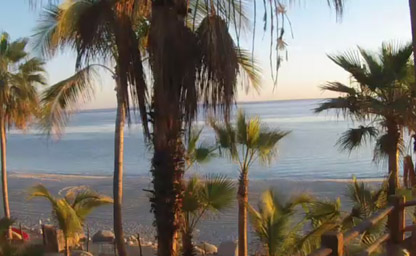
Looking Northeast into the Sea of Cortez

Looking into the Sea of Cortez, just southeast of Los Barriles
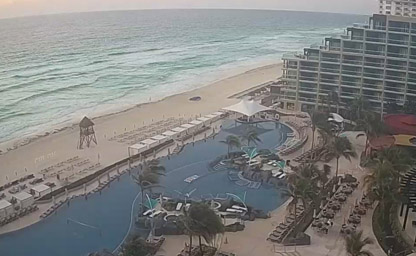
Take a look to what's going on now in paradise
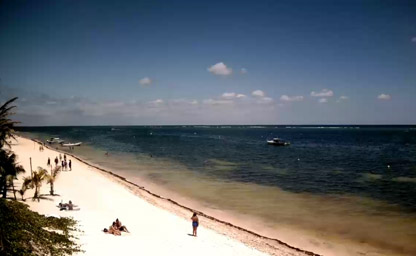
Tourist destinations to a peaceful
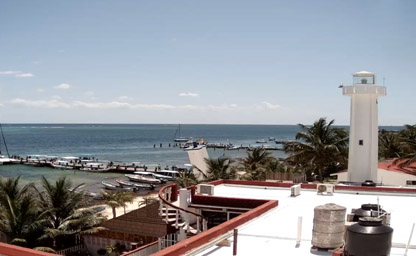
Puerto Morelos is located on the Carribbean coast of Mexico
Mexico, a land of diverse landscapes, vibrant cultures, and rich history, invites you on a digital journey through the lens of webcams. Explore the beauty of this fascinating country from the comfort of your own space, as we delve into historic cities, breathtaking natural wonders, and the warm embrace of Mexican traditions.
Our digital exploration begins in the heart of Mexico, in the vibrant capital city. Webcams strategically placed in iconic locations offer real-time views of Mexico City's historic marvels. From the grandeur of the Zócalo to the architectural splendor of the Palacio de Bellas Artes, the live feeds capture the essence of a city steeped in history.
Immerse yourself in the lively streets of Coyoacán, where art and culture converge, or virtually wander through the ancient ruins of Teotihuacan. The digital lens becomes your window to Mexico City's cultural tapestry, where each frame tells a story of the past and the present.
Shift our gaze to the breathtaking natural wonders of Mexico as webcams unveil the majesty of the Copper Canyons. The live feeds provide panoramic views of rugged landscapes, deep canyons, and the intricate railway system that traverses this geological marvel.
Experience the awe-inspiring beauty of Barrancas del Cobre, where the digital lens captures the play of light and shadow on the canyon walls. Let the virtual journey be a testament to the diverse and pristine landscapes that make Mexico a haven for nature enthusiasts.
Continue our virtual tour to the Caribbean coast as webcams transport you to the idyllic beaches of Tulum. The live feeds showcase the turquoise waters, white sandy beaches, and the ancient Mayan ruins perched on the cliffs overlooking the sea.
Let the digital lens guide you through the bohemian charm of Tulum's beachside cafes, where the rhythms of the Caribbean create a tranquil ambiance. Immerse yourself in the coastal bliss as you virtually explore the wonders that make Tulum a haven for sun-seekers.
Our virtual journey takes us to Oaxaca, a city with a rich cultural heritage and an artistic soul. Webcams capture the vibrant colors of the local markets, where traditional crafts and culinary delights abound. Experience the lively atmosphere of the Zócalo, where festivals and celebrations showcase the spirit of the Oaxacan people.
The digital lens becomes a portal to the world of mezcal production, traditional Zapotec textiles, and the ancient ruins of Monte Albán. Explore the cultural richness of Oaxaca, where the past is celebrated in every dance, every dish, and every piece of art.
As our virtual odyssey continues, webcams guide us through the colonial splendor of Guanajuato. The live feeds capture the cobblestone streets, colorful houses, and the historic plazas that define this UNESCO World Heritage site. Journey virtually through the underground tunnels, witness the vibrant street performances, and marvel at the stunning architecture that transports you to another era.
Let the digital lens be your guide to the enchanting alleys of Callejón del Beso or the grandeur of Teatro Juárez. Guanajuato's colonial charm unfolds in every frame, offering a visual treat for history and architecture enthusiasts.
As our digital journey through Mexico concludes, the webcams have unfolded a rich tapestry of historic cities, natural wonders, coastal paradises, and cultural treasures. Whether exploring the bustling streets of Mexico City, gazing at the Copper Canyons, basking in the coastal bliss of Tulum, or savoring the artistic soul of Oaxaca, Mexico's beauty comes alive through every pixel on your screen.
Let this virtual tour be an invitation to delve deeper into the diverse landscapes and cultures that make Mexico a truly extraordinary destination. The digital lens, although a substitute for being there in person, allows us to appreciate and celebrate the richness that Mexico generously shares with the world.
Mexico has one of the richest and most fascinating histories in the world, shaped by ancient civilizations, colonial rule, and revolutionary movements. The country's diverse cultural heritage is a result of thousands of years of indigenous traditions blended with Spanish influences.
The history of Mexico dates back more than 10,000 years, with the earliest known civilizations emerging around 2500 BCE. Among the most famous pre-Columbian cultures were the Olmecs, the Maya, the Zapotecs, and the Mixtecs. The Olmecs, often considered the "mother civilization" of Mesoamerica, thrived between 1400 and 400 BCE and left behind mysterious colossal stone heads, some of which can still be seen today.
The Maya civilization, which flourished between 2000 BCE and 1500 CE, built impressive cities such as Chichén Itzá, Tikal, and Palenque. They developed a complex writing system, an advanced understanding of astronomy, and an elaborate calendar system that continues to intrigue historians and researchers. Meanwhile, the Zapotecs and Mixtecs built magnificent cities like Monte Albán and Mitla in what is now Oaxaca.
One of the most powerful civilizations to arise in ancient Mexico was the Aztec Empire. Founded in the early 14th century, the Aztecs built their capital, Tenochtitlán, on an island in Lake Texcoco. The city, with its towering pyramids and vast marketplaces, was one of the largest and most sophisticated urban centers of its time. The Aztecs were fierce warriors and practiced human sacrifice as part of their religious beliefs.
In 1519, Spanish explorer Hernán Cortés arrived on the shores of Mexico with a small army. With the help of indigenous allies and the spread of European diseases, which decimated the native population, the Spanish conquered Tenochtitlán in 1521, marking the fall of the Aztec Empire. Mexico became part of the Spanish Empire for nearly 300 years, during which time Catholic missionaries converted indigenous populations, and a new mestizo (mixed-race) culture emerged.
By the early 19th century, discontent with Spanish rule grew among Mexicans. In 1810, Miguel Hidalgo, a Catholic priest, gave the famous "Grito de Dolores" (Cry of Dolores), which ignited the Mexican War of Independence. After a long and bloody struggle, Mexico finally gained its independence in 1821.
The newly independent nation faced political instability, foreign invasions, and internal conflicts. In the mid-19th century, President Benito Juárez led a series of liberal reforms to modernize the country, but Mexico soon found itself under French occupation when Emperor Maximilian I, an Austrian archduke, was installed as ruler. However, Juárez’s forces ultimately defeated the French, and Maximilian was executed in 1867.
At the turn of the 20th century, the country was ruled by dictator Porfirio Díaz, whose policies favored the wealthy elite while keeping the majority of Mexicans in poverty. This led to the Mexican Revolution (1910-1920), one of the most significant social and political upheavals in Latin American history. Revolutionary leaders such as Emiliano Zapata, Francisco "Pancho" Villa, and Venustiano Carranza fought for land reforms and workers' rights, resulting in a new constitution in 1917.
In the 20th and 21st centuries, Mexico underwent economic growth, urbanization, and social changes. Today, it is one of the largest economies in Latin America, known for its vibrant culture, world-famous cuisine, and stunning landscapes. Mexico’s history is deeply embedded in its traditions, festivals, and archaeological sites, making it one of the most visited countries for cultural and historical tourism.
Mexico’s climate is as diverse as its geography, ranging from tropical rainforests to arid deserts. The country is divided into different climate zones due to its varying elevations and latitude.
The coastal regions of Mexico, including destinations like Cancún, Playa del Carmen, and Puerto Vallarta, have a tropical climate with warm temperatures year-round. The dry season, from November to April, is the most popular time for tourists, as the weather is sunny and humidity is lower. The rainy season, from May to October, brings short but intense showers, usually in the afternoon.
Inland, central Mexico, including Mexico City, Puebla, and Guanajuato, enjoys a temperate climate due to its higher elevation. Summers are warm, with temperatures averaging around 20-25°C (68-77°F), while winters are mild, with cooler nights. Rainfall is more common between June and September, but overall, the climate remains pleasant throughout the year.
The northern regions, such as Chihuahua and Sonora, experience a desert climate with hot summers and cooler winters. In some areas, temperatures can exceed 40°C (104°F) in the summer, while winter nights can drop below freezing. Baja California has a Mediterranean climate, similar to Southern California, with mild, wet winters and hot, dry summers.
The southern parts of Mexico, including Chiapas and the Yucatán Peninsula, have a humid, tropical climate. This region is lush and green, with high rainfall, especially in the summer months. The jungles of Chiapas, home to ancient Mayan ruins like Palenque, are warm and humid throughout the year.
Mexico is the 14th largest country in the world, covering nearly 2 million square kilometers (770,000 square miles). It shares borders with the United States to the north and Guatemala and Belize to the south. The country has a varied geography that includes mountains, deserts, jungles, and stunning coastlines along the Pacific Ocean, the Gulf of Mexico, and the Caribbean Sea.
One of Mexico’s most significant geographical features is the Sierra Madre mountain range, which consists of three major chains: the Sierra Madre Occidental in the west, the Sierra Madre Oriental in the east, and the Sierra Madre del Sur in the south. These mountains create dramatic landscapes and influence regional climates.
Mexico is also home to numerous volcanoes, including Popocatépetl and Iztaccíhuatl, which are located near Mexico City. Another famous volcano is Parícutin, which erupted in 1943 and is considered one of the youngest volcanoes in the world.
The Yucatán Peninsula is geologically unique, featuring a vast network of underground rivers and cenotes (natural sinkholes). These cenotes were sacred to the Maya and are now popular for swimming and diving.
The country’s coastline stretches for over 9,330 kilometers (5,800 miles), offering some of the world’s most beautiful beaches. The Riviera Maya, Baja California, and Oaxaca’s Pacific coast are famous for their crystal-clear waters, surfing spots, and marine biodiversity.
Mexico also has several large deserts, including the Chihuahuan Desert and the Sonoran Desert, which are home to unique flora and fauna such as the saguaro cactus and the elusive jaguar.
With its diverse landscapes, Mexico offers endless opportunities for adventure, from hiking in Copper Canyon to exploring the tropical forests of Chiapas and snorkeling in the coral reefs of Cozumel.
Travel Tip: If you want to experience Mexico’s rich history and stunning landscapes in one trip, consider visiting the ancient ruins of Teotihuacán, just outside Mexico City, and then heading to the beaches of Tulum, where you can see a Mayan temple overlooking the Caribbean Sea.
Interesting Fact: Mexico is home to the world’s largest pyramid by volume, the Great Pyramid of Cholula. Although it may not look as tall as the Great Pyramid of Giza, it is actually larger in volume and was built over centuries by different civilizations.